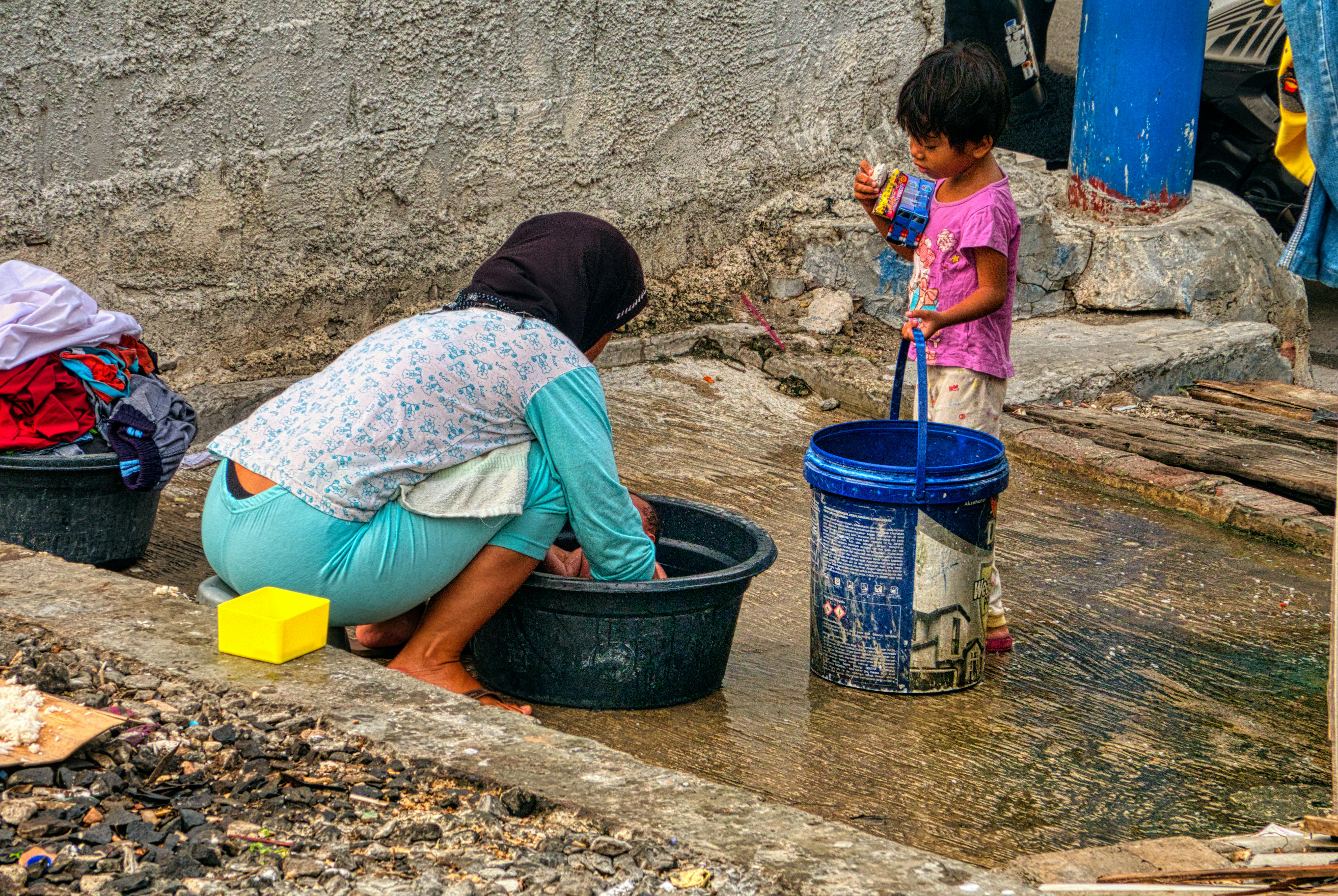Pumpkins are a popular seasonal crop that is enjoyed by many people during the fall season. But how much water do pumpkins need in order to grow and thrive in your garden? In this article, we will discuss the amount of water that pumpkins need throughout their growth cycle, as well as other important tips for growing healthy and plentiful pumpkins.Pumpkins need about 1 to 2 inches of water per week, depending on the weather and the soil type. If the weather is hot and dry, pumpkins may need more water. If the soil is sandy, it will need more water than clay-based soils. Watering at the base of the plant is best and keep foliage dry to prevent disease.
Watering Amount
The amount of water needed for healthy pumpkin plants depends on the soil, air temperature, and humidity. In general, pumpkins need about 1-2 inches of water per week. It is important to water deeply and infrequently to encourage deep rooting, as shallow watering can lead to shallow root systems. Additionally, it is important to note that too much water can also be detrimental and can cause the pumpkin plant to become over saturated.
Water Frequency
Pumpkin plants should be watered on a regular basis in order to maintain consistent moisture levels in the soil. The frequency of watering will depend on the weather conditions and the type of soil in which the pumpkin plants are growing. For example, sandy soils will require more frequent watering than heavier clay soils as they have a tendency to dry out faster. During hot summer months it may be necessary to water every other day or even daily in order for the plant to remain hydrated.
Time of Day
The best time of day for watering pumpkins is during the early morning or late evening hours when temperatures are cooler and there is less wind. This helps reduce evaporation from occurring too quickly and allows the water to penetrate deeply into the soil where it can be absorbed by the roots more effectively. Additionally, avoiding mid-day watering helps prevent fungal diseases caused by wet foliage when temperatures are high.
Soil Conditions
Before watering pumpkins it is important to check the soil conditions around them. If the top two inches of soil are dry then it’s time to add some water. If there is standing water present then this could indicate that irrigation may be too frequent or that there is poor drainage in certain areas which should be addressed before continuing with regular watering.
Overall, proper watering techniques are essential for promoting healthy growth of pumpkin plants. Knowing when and how much water needed along with taking into consideration factors such as temperature, humidity, and soil conditions all play an important role in helping ensure successful growth and yields of pumpkins each season!
Frequency of Watering Pumpkin Plants
Pumpkin plants require regular watering to ensure the highest yield of pumpkins. The frequency of watering will depend on the weather conditions, soil type and the stage of growth that the pumpkin plant is in. In hot weather or during times when there has been little or no rain, it is important to water pumpkin plants more often. For example, during germination, it is important to keep the soil consistently moist for successful germination. During active growth and flowering, it is important to water regularly to support the plant’s development. The ideal frequency for watering a pumpkin plant is every two to three days. However, if the weather is particularly hot and dry then it may be necessary to water them daily or even twice a day. When watering, make sure that you apply enough water so that it penetrates deeply into the soil and reaches the roots of the plant. This will encourage deep root growth which will help support vigorous plant growth and a high yield of pumpkins.
It is also important to monitor your soil’s moisture levels throughout the growing season as this will help you determine how often you need to water your pumpkin plants. If your soil is dry when you test it then it’s time to give your plants a good drink! If you find that you are having trouble keeping up with regular watering then consider using a drip irrigation system or installing soaker hoses around each pumpkin plant. This can help ensure that your plants receive adequate moisture on a consistent basis without over-watering them.
Estimating How Much Water Pumpkins Need
Pumpkins are a great addition to any garden, but how much water do they need? Knowing how much water your pumpkins need is key to having a successful harvest. Estimating the right amount can be tricky, as it depends on several factors such as climate, soil composition, and the size of the pumpkin.
In general, pumpkins need at least an inch of water a week. This amount should increase during hot and dry periods or if your soil is sandy and lacks nutrients. If your pumpkins are in containers, they will also require more regular watering. A good rule of thumb is to water your pumpkins when the top 1-2 inches of soil have dried out.
If you’re unsure about how much water to give your pumpkins, it’s best to err on the side of caution and give them more than you think they need. The key is to make sure their roots don’t dry out completely; if this happens, their leaves will start to yellow and the fruits won’t reach full size.
To check that your pumpkins are getting enough water, dig up some soil from around the plant after watering it. If it’s damp but not soggy, then you know you’re giving it just enough H2O! With a little bit of trial and error, you’ll eventually figure out what works best for your pumpkins so they can produce tasty fruits come harvest time!
Soil Types
Soil types are one of the most important factors for plant growth and development. Different plants require different types of soil to grow and thrive. Soil type can be determined by various characteristics, such as texture, color, structure, and drainage. Sandy soils are well-drained, while clay soils are more prone to waterlogging. Loamy soils are a combination of sand, silt, and clay particles and have good drainage properties. Knowing the soil type is important for selecting suitable plants for a particular area.
Moisture Content
The moisture content of soil is an important factor in determining how much water is available for plant growth. Too little moisture can cause plants to become stressed and susceptible to diseases, while too much moisture can lead to root rot or other problems. A healthy balance of moisture in the soil helps to keep plants healthy and promote optimal growth. The amount of water required by a particular plant depends on its specific needs as well as the type of soil it is growing in.

Significance of Mulch for Pumpkin Plants
Mulching is an important practice for the health and productivity of pumpkin plants. It helps conserve moisture, reduce weed growth and protect the roots from extreme temperatures. Moreover, mulch also improves the soil structure, adds nutrients to it and increases its fertility.
Mulching can be done with a variety of materials such as straw, shredded leaves, grass clippings or even plastic sheeting. Straw is usually the most popular choice as it is a natural material that decomposes quickly and provides an ideal environment for beneficial microorganisms to thrive in. In addition, it also helps to keep the soil temperature consistent and prevents the roots from becoming too hot or cold.
Another benefit of mulching is that it prevents weeds from growing around pumpkin plants since it blocks out light that would otherwise allow weeds to germinate. Additionally, mulching also keeps soil moisture levels consistent by reducing evaporation and runoff. This helps to ensure that pumpkin plants have enough water available when they need it most during their growing season.
Finally, mulch can also help protect pumpkin plants from pests such as slugs and snails which can cause significant damage if left unchecked. By providing a physical barrier around the plant’s stem and roots, these pests are less likely to be able to access them directly.
Overall, mulch is an essential tool for any gardener growing pumpkins as it provides several key benefits such as conserving moisture, reducing weed growth, protecting roots from extreme temperatures, improving soil structure and increasing fertility – all of which contribute towards healthy and productive plants in the garden!
Mulching
Mulching is an effective way to help retain moisture in the soil around your pumpkin plants. Mulches can be made from organic materials such as straw, grass clippings, leaves, or even shredded newspaper. These materials will help keep the soil cool and reduce evaporation rates. It is also important to keep the mulch away from the stems of your pumpkin plants to avoid rot and disease issues.
Watering
Proper watering techniques are essential for helping your pumpkin plants retain water. Water your plants deeply but infrequently, allowing the top few inches of soil to dry out between waterings. Avoid shallow or frequent watering as this encourages shallow root growth and reduces the plant’s ability to uptake water from deeper layers of soil. If you are using an irrigation system, consider installing a drip line or soaker hose with a timer for more efficient watering.
Covering
Covering your pumpkin plants with floating row cover can help protect them from extreme temperatures as well as reduce water loss through evaporation. This can be especially beneficial during periods of drought when supplemental irrigation may not be available or feasible. Be sure to anchor down the edges of the cover to prevent it from blowing away in windy conditions.
Compost
Adding a layer of compost around your pumpkin plants can help them retain moisture in several ways. Compost acts like a sponge, absorbing up to four times its weight in water and slowly releasing it back into the soil as needed. It also helps improve drainage and aeration which aids in water retention, and increases nutrient availability for healthier plant growth.
Weeding
Weeds compete with your pumpkin plants for moisture and nutrients so it is important to keep them under control. Hand-weeding is best done when the soil is moist so that weed roots come out more easily with less disruption to surrounding roots systems. Mulching can also help reduce weed growth by blocking sunlight needed for weeds to germinate and grow.
Caring for Pumpkins During Drought Conditions
Pumpkins are a versatile and widely used crop in gardens and farms. During times of drought, however, pumpkins require extra care in order to thrive. Without proper preparation and care, the effects of drought can cause pumpkins to wither or rot, resulting in a poor harvest or total loss of the crop. Here are some tips for properly caring for pumpkins during dry periods.
The most important step in caring for pumpkins during dry conditions is to ensure they are adequately watered. This means establishing an efficient irrigation system that ensures that each pumpkin is receiving enough water without overwatering them. Consider investing in a drip irrigation system that waters the plants slowly and steadily over time, allowing the water to seep into the soil more effectively than traditional overhead sprinkler systems. Additionally, water early in the morning before temperatures begin to rise too high, as this will minimize evaporation and maximize absorption.
It is also important to keep weeds away from pumpkin vines during droughts. Weeds compete with pumpkin plants for moisture, so removing them as soon as possible is essential for healthy growth. Mulching around each plant can also help to retain moisture in the soil and reduce weed growth by blocking sunlight from reaching weed seeds that may be present in the soil. Additionally, consider using a combination of organic fertilizers and compost when planting or replanting pumpkins; these will help retain moisture while providing additional nutrients to the soil.
Finally, it is important to monitor your pumpkin plants closely during times of drought so any issues can be addressed quickly before they become a major problem. Keep an eye out for signs of dehydration such as wilting or yellowing leaves or stems; if you notice these signs, it’s time to increase watering frequency or adjust your irrigation system accordingly. It’s also important to watch out for pests such as aphids or squash bugs; taking steps like adding beneficial insects such as ladybugs or praying mantis can help keep pests away from your pumpkin vines naturally without harsh chemicals.
By following these tips on proper care for pumpkins during times of drought, you can ensure your crop remains healthy despite dry conditions!

Conclusion
Pumpkins require a great deal of water for healthy growth. Pumpkins need about 1 to 2 inches of water each week during their growing season. The amount of water needed depends on the type of soil, weather conditions, and the size and stage of development of the pumpkin plant. Without adequate water, pumpkins will not be able to form or ripen properly. It is important to keep your pumpkin plants well-watered throughout the growing season to ensure a good harvest.
By understanding the needs of your pumpkin plants, you can ensure that they have plenty of access to moisture. Watering deeply and gradually will allow your pumpkins to thrive by helping them develop strong roots and healthy fruit. With proper care, you should have an abundant harvest at the end of the season!

